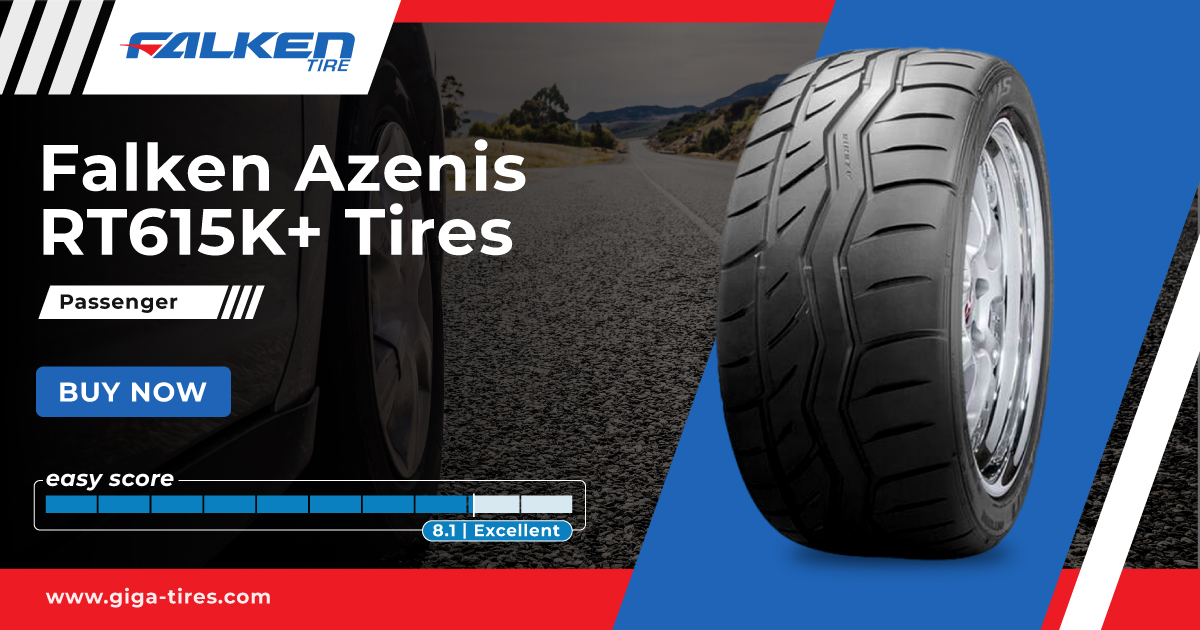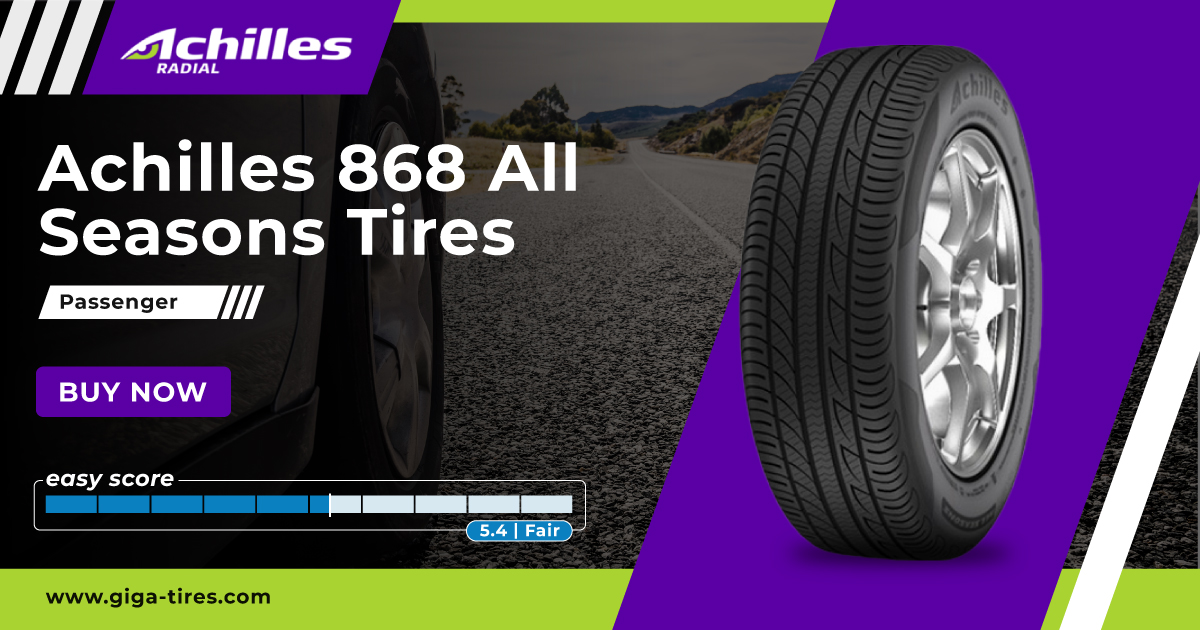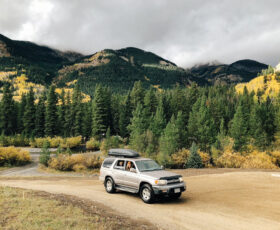Last Updated on 2 months
What Is UTQG and What Does It Mean?
Let’s explore the details of UTQG! “UTQG” is the acronym for “Uniform Tire Quality Grading,” a system crafted by the Department of Transportation. It’s a consumer’s guide to understanding how a tire stacks up regarding tread wear, traction performance, and temperature resistance.
Picture this: a tire sporting a UTQG rating of 400 AB. In this label, the “400” signifies tread wear, hinting that this particular tire could last four times as long as the baseline government test tire, which is pegged at 100.
But it’s vital to remember that this number doesn’t predict the exact miles you’ll get out of your tire – that’s influenced by how and where you drive, maintenance routines, and even the whims of the weather.
Peeling back the layers of UTQG further, let’s talk about the ‘treadwear grade.’ You’ll find it proudly stamped on the tire’s sidewall, and it’s your clue into its expected lifespan. But UTQG isn’t just a one-trick pony; it also brings traction and temperature into the mix.
Traction is all about how well the tire can come to a stop on wet roads, a crucial safety feature measured under particular conditions. And temperature? That’s the tire’s superhero cape against heat, tested rigorously to ensure your tires can keep calm, contributing to safer, longer-lasting rides. So next time you’re tire shopping, glance at that UTQG – it’s like a cheat sheet for choosing your ride’s best shoes!
What Is a UTQG Tire Rating?
Imagine you’re embarking on a quest to find the perfect tire for your vehicle. The terrain is vast, with countless tire options, and you need just the right companion for your automotive adventures.
You can use the UTQG tire rating system, your reliable guide in this journey. UTQG stands for Uniform Tire Quality Grading, a tool designed by the National Highway Traffic Safety Administration to help steer your decision-making.
This system is your insider’s look into how tires perform against three critical metrics: Treadwear, traction, and temperature. The treadwear rating details a tire’s durability—how long it’s predicted to tread the roads compared to a standard reference tire.
Traction rating, on the other hand, is all about grip—how well your tire can stop on wet surfaces. Lastly, temperature rating gives you the lowdown on heat resistance—a tire’s ability to keep calm under the pressure of high speeds.
So, when you’re out there comparing tires, let the UTQG ratings be your compass, pointing you toward the right tire that fits your vehicle, your driving style, and your life’s pace.
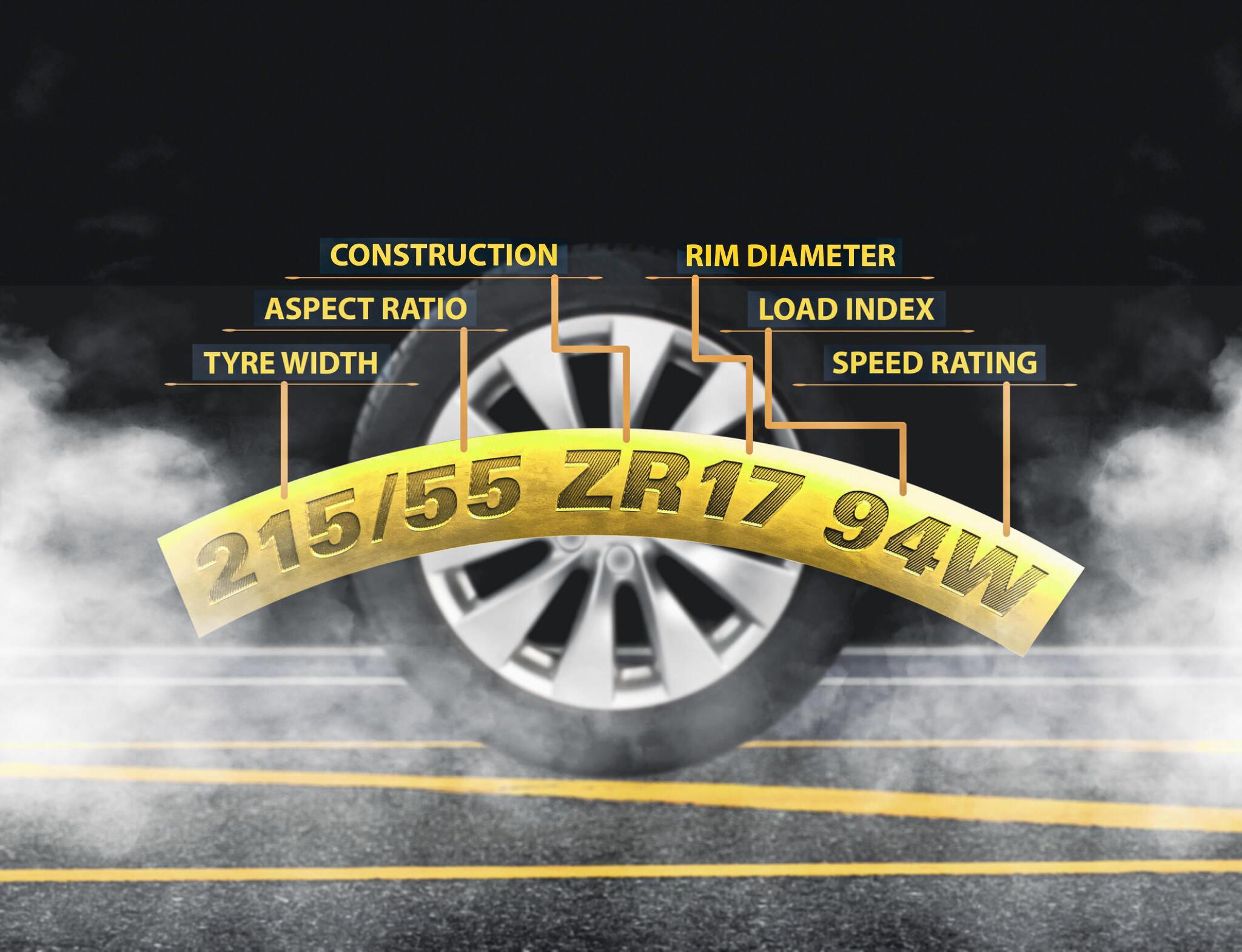
Treadwear Rating
Let’s talk about the lifespan of your tires, specifically through the lens of the treadwear rating. This rating gives you a snapshot of a tire’s longevity, reflecting how swiftly its tread might bid farewell.
To land this rating, tires embark on a little journey – they’re tested on government-sanctioned tracks under very particular conditions. But here’s the catch: the natural world has different climates, roads, and driving styles, which means the treadwear rating is just the beginning of the story.
For a narrative tailored to your driving saga, it’s wise to chat with a tire expert like the ones you’d find at Tires Plus. They’re the matchmakers who can help you find the treadwear rating harmonious with the unique way you roll, ensuring your vehicle is equipped with tires that love the road as much as you do.
What UTQG Treadwear Measures
Regarding tire longevity, those boasting higher treadwear ratings are often the marathon runners, ready to last longer than their peers on the road. Here’s what you should know about UTQG treadwear:
- Refrain from letting treadwear ratings be the sole compass guiding your tire purchase; they’re an important factor but only a piece of the puzzle.
- Make extensive tire research, considering the unique ‘self-reported’ aspect of these ratings by manufacturers and the limited scope of standard tests.
- Consider the testing terrain: a track in western Texas serves as the proving ground where tires endure a 7,200-mile trial, benchmarked against a standard control tire rated at 100.
- A tire rated 400 should last four times as long as the control tire.
- The testing waters are unclear. Different tire manufacturers can choose their benchmark tires, making the comparisons’ baseline less stable.
- Comparing treadwear ratings can be more akin to comparing different fruits than identical apples.
- Our analysis of the USDOT’s database unveils a fascinating trend: average UTQG wear ratings fluctuate according to the tire’s designated purpose.
Temperature Rating
As you drive, the tires whirling beneath you contact the pavement, causing friction. This friction leads to heat, a tire’s silent adversary. If your tires are already showing signs of age, this heat can be more than just a nuisance; it can be a hazard.
That’s where the tire temperature rating comes into play. This handy metric gauges a tire’s ability to withstand and resist the heat from constant contact with the road, ensuring a safer, more relaxed ride even as the speedometer climbs.
What UTQG Temperature Ratings Mean
Heat resistance is a vital feature in tire safety, and it’s categorized into three grades: A, B, and C. The National Highway Traffic Safety Administration (NHTSA) states that 62% of tires in the United States have an A grade, which means they can handle situations with a lot of heat. To put it simply, the grade spectrum shows how well the tire can handle high speeds:
- Temperature Grade A: These tires are your go-to for high-octane journeys, capable of cruising safely at speeds above 115 mph.
- Grade B: These are reliable mid-range performers, between 100 and 115 mph.
- Grade C: These are your standard bearers, offering a safe passage from 85 to 100 mph speeds.
All tires sold in the United States must meet or exceed the C grade standard, ensuring that tires can withstand the heat of your daily travel needs even at the base level.
Traction Rating
Navigating through a downpour can be an actual test for your tires. This is where the traction rating within the UTQG becomes your safety beacon. It measures how effectively your tires can maintain contact and stop on slippery, wet surfaces.
With this rating, you can confidently handle any flood. Traction is graded as (A) for superior, (B) for suitable, and (C) for average performance, ensuring you know just how well your tires will stick to the road when it matters most.
What UTQG Traction Ratings Mean
Slippery roads can make it hard for your tires to stop your car. It’s easy to follow this rule of thumb: the higher the grade, the better the tire stops quickly on wet pavement.
The grading system includes A.A., A, B, and C. NHTSA data shows that only 15% of tires get the top rating of A.A., 75% have an A rating, 7% have a B rating, and only four tire lines have a C rating. The C-rated tires are also made for racing tracks, not for everyday driving or short road trips.
Source: Goodyear
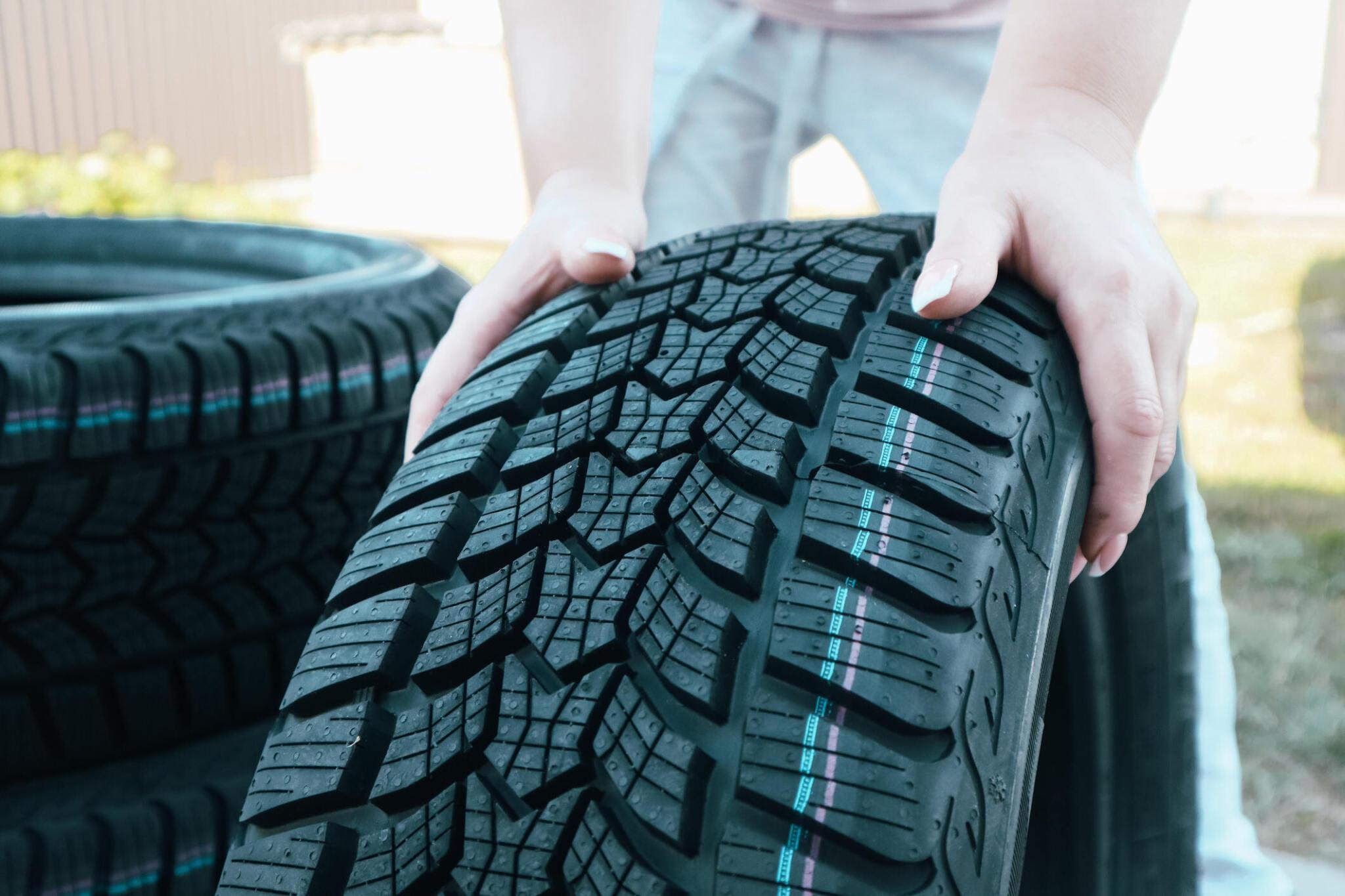
What Is a Good UTQG Rating?
A good UTQG rating generally indicates a tire built to last longer and perform better in traction and withstanding heat. But here’s the twist: higher is only always synonymous with superior.
The UTQG rating is a comparative scorecard that shows how well a tire performs compared to a standard reference tire regarding Treadwear, grip, and temperature endurance.
A tire with a moderate UTQG treadwear score may be OK for a casual driver who doesn’t put on many miles—maybe you’re enjoying retirement, driving two cars, or working from home.
Your vehicle is practically your second home due to lengthy commutes, frequent journeys, or those delightful weekend getaways. In that case, you’ll likely opt for tires that promise longevity, excel in handling, and offer a serene driving experience.
For people who love driving fast cars or other high-octane machines, finding the right tires is all about balancing performance and accuracy. Such drivers often prioritize adhesive grip and quick handling over extended tread life, especially when tackling the serpentine bliss of the Pacific Coast Highway or the Appalachian serenades.
Decoding UTQG: Your Complete Tire Selection Companion
If you are on the quest for new tires, UTQG serves as your handy roadmap. However, viewing it as part of a more extensive journey than the destination is essential. These ratings are from tests conducted under specific conditions that might not mirror your everyday road adventures.
As you search for the ideal tires, consider your driving habits, your car’s unique characteristics, and the typical weather and roads in your area. While regular and all-season tires come with a legally mandated UTQG rating, snow tires march to the beat of a different drum—they’re exempt from this rating.
If your journey takes you through winter wonderlands, a Tires Plus expert can act as your sherpa, assisting you in selecting snow tires that are up to the task of Jack Frost’s playground.
Understanding UTQG: A Closer Look at Tire Rating Reliability
Regarding the UTQG, think of it as a helpful hint rather than the whole story. Here’s why:
- A Glimpse, Not the Full Picture: The treadwear grade is based on testing that covers less than 12,000 kilometers, yet many tires will carry you safely for around 40,000 kilometers. This initial testing may only partially represent the tire’s lifespan.
- Variety in Testing Methods: The NHTSA isn’t putting these tires through their paces; it’s the manufacturers themselves or third parties they appoint. One company’s 700 treadwear rating could tell a different tale than another’s, even if the numbers match.
Scope of UTQG Traction Ratings
When assessing traction through UTQG, remember it’s a specific lens focusing only on stopping on wet pavement. It doesn’t consider dry braking, the dynamics of damp cornering, how the tire behaves in snowy conditions, or its resistance to hydroplaning.
Plus, modern vehicles often come equipped with anti-lock braking systems (ABS), which enhance traction and allow for steering during braking—this can influence the tire’s performance differently than the UTQG traction tests, which are based on the premise of fully locked wheel scenarios.
The UTQG is sometimes stamped on all tires. Here’s a list of those that usually don’t bear this rating:
- The heavy-duty rollers under commercial trucks.
- Specialized winter tires designed for the chill.
- Compact space-saver tires are typically found tucked away in your trunk.
- Tires purposed for trailers.
- Smaller tires, those with a diameter under 12 inches, are often seen on non-passenger vehicles.
Maximizing UTQG Insights for Smart Tire Shopping
It’s best to stick to the same brand family when comparing tire qualities. Comparing different brands might not be fair because companies sometimes report a lower treadwear grade than what the tire achieves. This is done to make more money from marketing. However, comparing tires from the same brand is more accurate because they are more likely to have been tested the same way.
Have a clear vision of what you expect from your tires. Are you chasing after that stick-to-the-road grip and longevity, or maybe you’re all about that sharp, responsive handling at higher speeds?
For those with an eye for adventure across varying terrains, seeking out a tire with a sturdy treadwear rating, say in the upper hundreds like 600, could indicate a tire that’s six times more enduring than the standard test tire.
Strategic Tire Evaluation: Treadwear Ratings and Warranty Insights
Here are some tips for tire evaluation:
- Evaluate the manufacturer’s treadwear warranty to understand tire mileage expectations better.
- Combine the treadwear rating with warranty details for a comprehensive view of tire durability.
- Aim for at least the mileage guaranteed by the warranty, assuming diligent tire maintenance.
- Remember, a warranty can offer free tire replacement if premature wear occurs within the specified period or mileage.
- High Treadwear, traction, and temperature ratings are part of the story; consistent care is necessary.
- Maintain regular inflation maintenance and consider driving habits and road conditions to extend tire life.
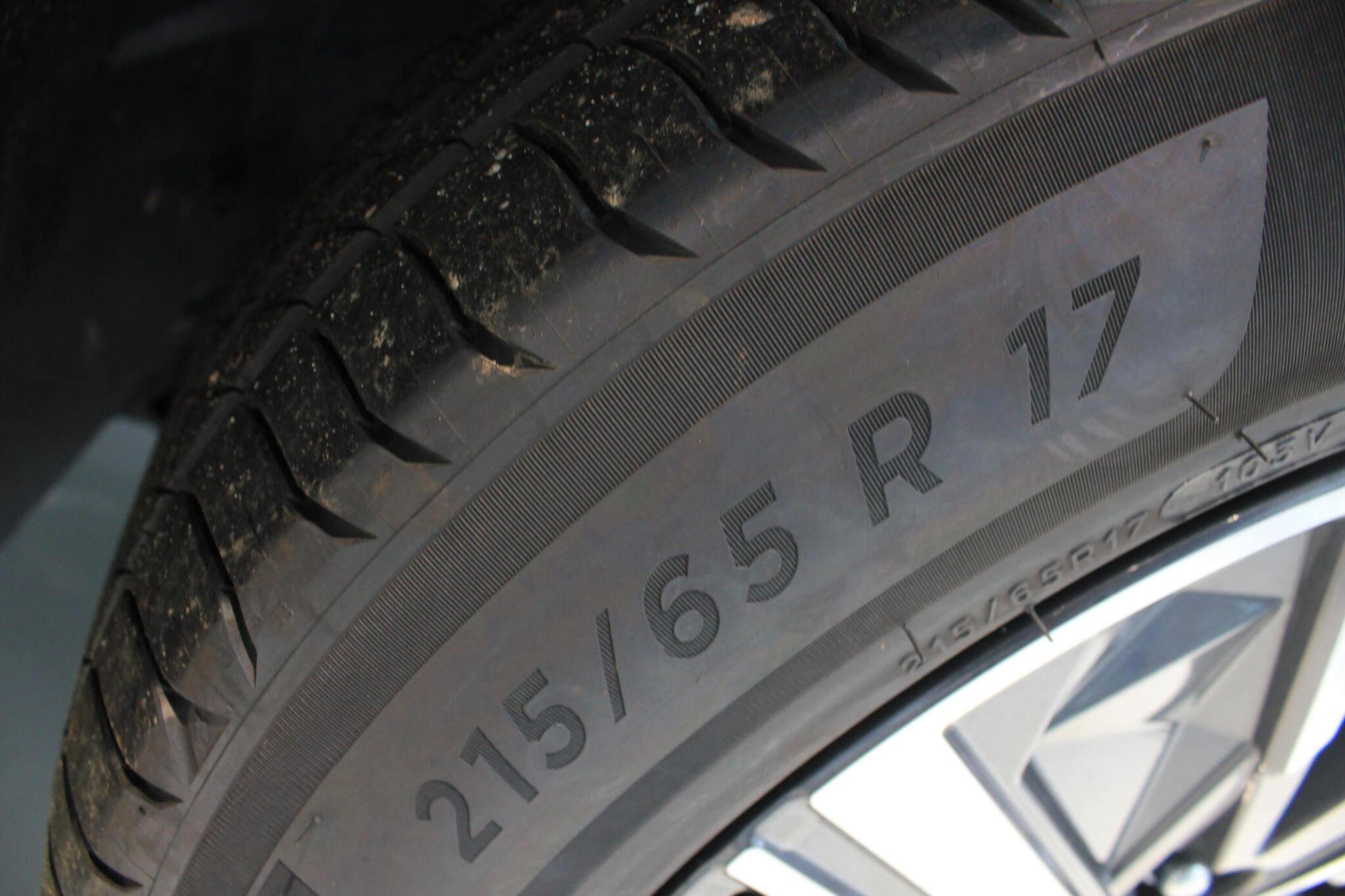
UTQG Rating On A Tire
The Uniform Tire Quality Grade (UTQG) is a rating system established by U.S. transportation authorities to assist consumers in making informed tire choices. Most passenger vehicle tires in the U.S. must display UTQG ratings, but there are exceptions, including deep-treaded and light truck tires, winter tires, spares, small tires, and trailer tires.
Rating Components:
- A numerical value indicates Treadwear; a higher number suggests a longer-lasting tread.
- Traction: It is given in letter grades (A.A., A, B, C), with A.A. indicating the best traction performance, particularly on wet surfaces.
- Temperature Resistance: A letter grade (A, B, C) shows a tire’s capacity to withstand and disperse heat effectively.
- Trade-offs: A higher treadwear rating might come at the expense of lower traction or temperature resistance, so consider your priorities.
- Finding UTQG Ratings: Look for these on the tire sidewall, shop labels, or the manufacturer’s website.
Testing and Accountability:
- Despite being a government-mandated system, the tire manufacturers carry out testing or hire third-party testers.
- The National Highway Traffic Safety Administration oversees the integrity of these tests and can impose fines for discrepancies.
Why Are UTQG Ratings Important?
UTQG ratings provide valuable information on your tires’ capabilities, particularly regarding their longevity and how they handle various driving conditions. Here are some insights it offers:
1) Wet Conditions Analysis:
- Traction Grade: Measures tire grip on wet surfaces, essential for stopping safely in rainy weather.
- Rating Scale: Ranges from A.A. (top grip) to C (minimal grip), with most consumer tires falling into the A category.
- Performance Needs: Opt for A-rated for standard driving needs; choose AA-rated for high-performance requirements.
- Focused Scope of Traction Ratings: Remember that traction grades don’t account for dry grip, hydroplaning, or cornering – they strictly indicate wet stopping performance, with A being generally adequate for everyday driving.
2) Tread Longevity Insights:
- Treadwear Ratings: UTQG provides numerical treadwear ratings to estimate tire longevity relative to a standardized reference tire.
- Safety and Traction: A worn tread can lead to reduced grip and increased puncture risk, affecting vehicle control.
- Interpreting Numbers: A treadwear rating of 100 means tire longevity is comparable to the reference tire, while 200 indicates double the lifespan, and so on.
Treadwear Range:
- Standard Ratings: Most consumer tires score between 200 and 400 in Treadwear.
- Long-Lasting Options: Tires with ratings above 600 are designed to last six times longer than the reference model.
Comparison Guidelines:
- Brand-Specific Comparisons: Due to potential discrepancies in reporting, compare treadwear ratings within the same brand for more accurate assessments.
3) UTQG Temperature Grades for Optimal Tire Heat Resistance
The UTQG Temperature Grade measures a tire’s resistance to heat build-up under normal operating conditions.
Heat Resistance Metrics:
- Temperature Grades: UTQG rates tires’ ability to withstand and emit heat, essential for high-speed driving.
- Grade Scale: A (superior heat dissipation over 115 mph), B (effective between 100 to 115 mph), and C (adequate between 85 to 100 mph).
- Minimum Standards: All passenger tires must achieve a C grade for safety.
Selecting the Right Grade:
- Grade A: It is ideal for vehicles that will endure high-speed conditions, offering the highest level of heat resistance.
- Grade B: They are not as heat-resistant as those with an A grade but perform adequately under usual driving conditions.
- Grade C: It is sufficient for most drivers, covering standard speed ranges safely.
- Driving Requirements: Consider higher grades for faster driving or if additional heat resistance is a priority for your vehicle’s performance.
How Tire Performance Grades Are Determined
Contrary to some beliefs, the UTQG grades are reported by tire manufacturers or third-party testers to the Department of Transportation (DOT) and are not generated by the DOT or NHTSA themselves. Detailed test results are confidential; the DOT reorganizes and publishes only a simplified version of the outcomes.
Distinct Testing for Each UTQG Component:
- Treadwear Assessment: It is conducted on real roads in West Texas, spanning a 400-mile circuit, completed 18 times for 7,200 miles.
- Traction Evaluation: It is performed using a ‘skid trailer’ that measures stopping distance on wet asphalt and concrete at 40 mph.
- Temperature Endurance: It is tested indoors against a high-speed drum, typically by third parties, to assess heat resistance.
Treadwear Testing Limitations:
- The test doesn’t represent the entire lifespan of tires, which can range from 50,000 to 100,000 miles.
- Tires are composed of layers with varying firmness, affecting wear rates.
- Test restrictions include 400-mile laps, tire rotation, wheel alignment, and inflation checks every 800 miles.
- The reference tire is consistently rated at 100, setting the standard for comparison.
Practical Use of Treadwear Grades:
- It is best applied when comparing tires of the same brand; for instance, a tire with a UTQG of 600 is estimated to last 2.4 times longer than a tire with a 250 rating.
Traction Grade Methodology:
- It reflects the tire’s ability to stop on wet surfaces but not dry conditions, hydroplaning resistance, or cornering.
- The grade is derived from the coefficient of friction measured on locked wheels.
Temperature Resistance Testing:
- It is vital for determining how a tire handles prolonged high-speed use.
- It is graded from A to C. A indicates the best heat resistance, ensuring tires can handle speeds over 115 mph.
Mandatory Minimums:
- Tires must achieve at least a C grade in temperature resistance to be sold in the U.S.
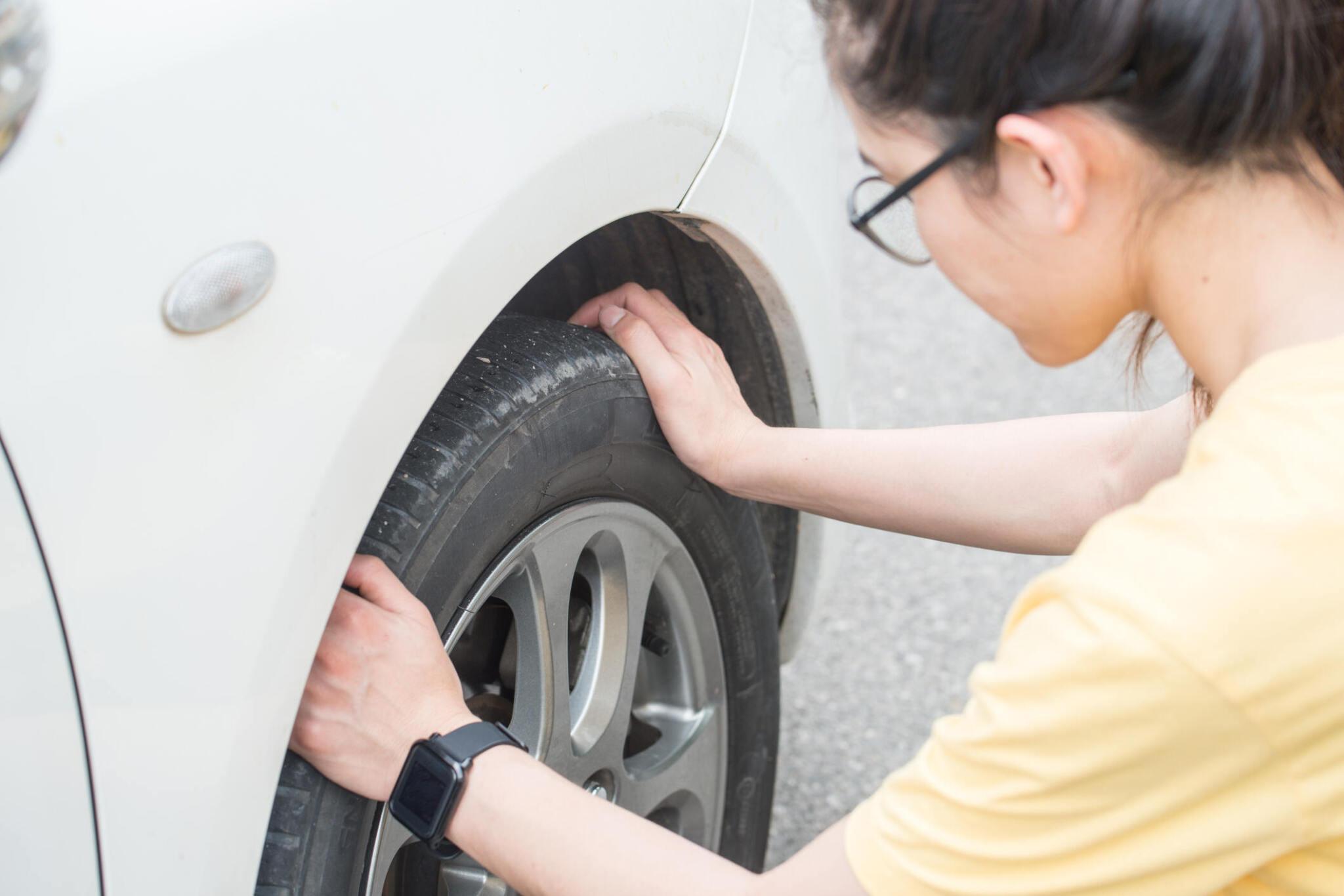
Navigating the UTQG System’s Challenges
Although the UTQG system is helpful, it has flaws. The system covers all tire sizes within a model with the same rating, even though there are now a lot of different sizes available compared to when it was first introduced. Here are some of the UTQG challenges:
- Treadwear Testing Quandaries: Smaller tires spin faster than larger ones, clocking more revolutions per mile. So, how can they share the same treadwear rating? Tire technology has leaped forward since the 1970s, with modern tires rolling many more miles. The traditional 7,200-mile loop test with meticulous maintenance hardly scratches the surface of today’s tire capabilities, making the results less than telling.
- The Narrow Scope of Traction Trials: The traction test is all about wet pavement braking in a straight line, leaving out other critical scenarios like dry braking and cornering or navigating through snow and ice. Tires that excel in damp braking often have high styrene content, which can compromise their performance in the cold. This narrow focus may give a partial picture of a tire’s versatility.
- Temperature Testing Limitations: This test might give the impression that anything below an ‘A’ rating is subpar. However, tires designed for dual on-and off-road use usually carry a ‘B’ or ‘C’ rating. The balance is between heat resistance and durability against impacts, as the compounds for dissipating heat can make the rubber more sensitive to damage. Therefore, such tires often have fewer heat-reducing chemicals.
Exploring Updates for the UTQG Rating System
Currently, the UTQG rating system is a bit subjective. Big names like Goodyear or Cooper make standard test tires under a five-year government contract. This situation might tip the scales a little in their favor. Here are updates for the UTQG rating system:
- Subjectivity in Ratings: The system’s structure permits manufacturers to downplay ratings without repercussions. This flexibility can be used strategically to differentiate similar tires within a product line, affecting consumers’ perception of value and longevity.
- Strategic Rating Adjustments: Consider two tires designed for identical vehicles. A vehicle with a higher price and mileage warranty may have the same UTQG rating as a cheaper, lower-mileage counterpart. A manufacturer may adjust the UTQG rating of the less expensive tire to maintain product hierarchy.
- Informed Consumer Choices: A standardized rating system could give consumers more power by making things more transparent and helping them compare tires more intelligently. Adding a fuel economy rating to the mix offers a valuable perspective.
- Warranty as a Guide: Until a more objective rating system emerges, it’s wise to consider the manufacturer’s treadwear warranty as a tangible commitment, reflecting confidence in tire longevity.
- Weather-Specific Designations: For those driving in varied weather conditions, the “All-Season” label on a tire can be more indicative of performance than the standard “A” traction rating found on most tires.
- Temperature Ratings for Different Uses: An “A” temperature rating is recommended for vehicles strictly used on-road, while a “B” rating suffices for those that dabble in off-road adventures, balancing on-road efficiency and resilience.
Conclusion & Recommendation
The Uniform Tire Quality Grading (UTQG) system has been a significant compass in learning about tire ratings. From Treadwear to traction and temperature resistance, the UTQG provides valuable insights into tire performance. Let’s recap the key takeaways:
- Treadwear Rating: This rating helps you gauge the longevity of your tire’s tread life. However, it’s based on controlled conditions that may not reflect your driving experience.
- Traction Rating: The UTQG traction rating measures a tire’s ability to stop on wet pavement, but this doesn’t cover other driving conditions like dry roads or winter weather.
- Temperature Rating: A tire’s temperature grade indicates its ability to resist heat at high speeds. It’s an essential factor for maintaining tire integrity and safety.
- Limitations and Considerations: The UTQG system has limitations. It doesn’t account for the various road conditions and driving habits affecting tire performance.
Given these insights, looking beyond the UTQG ratings alone is essential when selecting tires. Consider your driving habits, vehicle type, and typical road conditions. The manufacturer’s treadwear warranty can also be a robust indicator of tire quality.
Why Giga Tires?
Armed with knowledge and ready to make an informed decision? At Giga Tires, we’ve got you covered. You can explore our extensive collection, where you can filter based on UTQG ratings, ensuring you find the perfect match for your vehicle’s needs. Whether you’re navigating daily commutes or gearing up for rugged off-road adventures, our range caters to every kind of driver.
So why wait? Click the button below and embark on a seamless tire-buying journey that ensures satisfaction, safety, and superior performance. Your ideal tires are just a few clicks away!
FAQs
What Is Considered a Good UTQG Rating for Traction?
A traction rating indicates how effectively a tire can stop in wet conditions. The highest possible rating is ‘A.A.,’ followed by ‘A,’ ‘B,’ and ‘C.’ Tires with an ‘A.A.’ traction rating are expected to stop at significantly shorter distances than those with a ‘C’ rating.
Deciphering UTQG 720 AA: What Does It Mean?
UTQG ratings consist of a three-digit number and two letters or letter groups. For instance, you might see a tire rating like ‘720 A.A.’. The first letter or group of letters represents the traction rating, with ‘A.A.’ being the best, followed by ‘A,’ ‘B,’ and ‘C.’ A higher traction rating indicates superior stopping performance on wet roads.
What Does an 800 UTQG Rating Signify?
The treadwear rating reflects the expected lifespan of a tire. Treadwear ratings range from 100 to 1000. For example, an ‘800 UTQG’ tire is projected to last twice as long as a ‘400 UTQG’ tire. Treadwear performance is assessed through testing on a specific roadway course of approximately 400 miles.
Is a Higher UTQG Rating Always Better?
UTQG ratings provide insights into a tire’s durability. A higher treadwear number suggests that the tire’s tread will take longer to wear down, indicating a longer lifespan. In this context, higher is generally considered better.
Are All Tires Required to Have UTQG Ratings?
UTQG markings have been mandatory for all tires sold in the United States since 1979. However, certain types of tires, such as snow/winter tires, deep-tread light truck tires, run-flat tires, and those with diameters less than 12 inches, are exempt from UTQG ratings.
How Can I Determine Which Tires Are Better?
When selecting tires, consider factors beyond UTQG ratings. Look at the manufacturer’s warranty and customer reviews for quality information. A high-mileage warranty, such as 80,000 miles, is a positive indicator of tire quality. Proper tire care, including inflation and rotation, may be required to claim warranty benefits.
What Constitutes a Good Treadwear Rating?
According to the National Highway Transportation Safety Administration (NHTSA), only 15% of tires are rated below 200, typically intended for racing or specific applications. Ratings between 201 and 600 are more common, with 2% of tires rated above 600. The higher the rating, the longer the expected tread life.
Where Can I Find UTQG Ratings?
Examine the tire’s sidewall to access UTQG ratings for your vehicle’s tires or check ratings for new tires. The sidewall displays letter and number grades, providing valuable information about Treadwear, temperature resistance, and traction.




